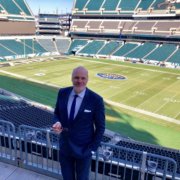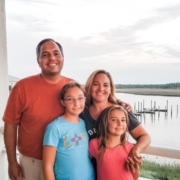How SLPs help people with autism communicate better
Speech-Language Pathologists (SLPs) can be some of the most helpful service providers in the life of people with autism.
In a nutshell, speech-language therapy addresses challenges with language and communicating with others. That means SLPs can help people with autism improve their verbal, nonverbal, and social communication.
Specifically, SLPs work to prevent, assess, diagnose, and treat speech, language, social communication, cognitive communication, and swallowing disorders in kids (and, sometimes, adults).
For individuals with autism who are non-speaking, this assistance and training can become an invaluable lifeline to the outside world. SLPs also can help these people learn how to use Augmentative and Alternative Communication (AAC) devices. For individuals with autism who can communicate with words, SLPs can teach skills to improve day-to-day interactions and pass along nuances that these individuals might not pick up on their own.
Jessie Ginsburg and Chris Wenger are two of the most widely followed SLPs today.
As founder and owner of the Pediatric Therapy Playhouse in West Los Angeles, Ginsburg specializes in working with kids as young as 1 and as old as 8 or 9. Wenger, on the other hand, works mostly with teenagers; he is the lead SLP at Rancho Cucamonga High School. Together, the two have transformed thousands of lives.
In recent years, the Los Angeles-based couple also has leveraged social media to promote their treatment perspectives and become Internet celebrities—together Ginsburg and Wenger have close to 1 million followers across platforms.
Both Ginsburg and Wenger use their platforms to educate others about speech-language therapy and raise awareness about how SLPs can make a difference in the lives of individuals with autism and other neurodivergent people. Both describe themselves as “neuroaffirming,” which means they’re always prioritizing the needs of neurodivergent individuals.
Ginsburg, author of “Ready, Set, Connect: A Sensory-Based Approach to Communication in Autistic Children,” offers special workshops that emphasize sensory-friendly techniques—that is, workshops built around techniques designed to help young people with sensory issues learn how to communicate better.
“For us the goal is total communication; multimodal communication,” said Ginsburg. “We ask, ‘How can we get this child communicating in whatever way is comfortable for them?’”
Engaging with kids
As Ginsburg explained it, her engagements with children often start with the same three questions: 1) Are they regulated? 2) Are they engaged, and 3) Are therapists doing activities that are motivating for them, instead of activities in which the child might refuse to participate?
She noted that once her therapists answer and address these questions, children progress.
“The majority of kids who come in at a young age and aren’t speaking—it’s usually because they’re not regulated or they’re dysregulated often,” she said. “That affects their ability to engage in reciprocal interaction. Language is learned through those interactions.”
Wenger shares a similar approach, though of course the young people with whom he works are all older.
For him, the ultimate objective is self-advocacy.
“We want kids and teens to be able to self-advocate when they feel pain or when they’re overwhelmed or feeling anxious or when they need to take a break,” he said. “That theme is really similar regardless of the age or when things are uncomfortable for them.”
For non-speaking individuals with autism, both Ginsburg and Wenger advocate introducing AAC devices earlier than other therapists or service providers might consider doing so. Often these are laptop or tablet computers that help someone with a speech or language impairment communicate.
In Ginsburg’s clinic, for instance, it’s not uncommon for therapists to use these devices with 18- and 24-month-old kids as they’re working with the youngsters to build regulation and engagement.
As kids get older, the devices also can be critical tools for non-speaking kids as they learn how to communicate, and for children who can speak but often get too worked up to draw up on words calmly and predictably.
“Kids who present with more extreme behavior challenges are the kids who are the ones that are most misunderstood,” said Wenger, who has been diagnosed with Attention Deficit/Hyperactivity Disorder (ADHD). “Those kids are the ones who don’t have access to communicating underlying needs. We help them build a foundation to communicate.”
Wenger likened this challenge to SCUBA diving: For some kids, he said, communication without proper tools is like SCUBA diving without the tools to access oxygen in a tank.
According to Ginsburg, a critical part of this process is working with kids to help them understand what their needs are. This is where self-advocacy comes in. It’s also where the notion of “neuroaffirming” strategies are born.
“I think a lot of people misunderstand what having a neurodiversity-affirming practice means,” she said. “It doesn’t mean let the kid be. It means we must support them in areas they want to work on. We need to give them the skills to communicate, then follow their lead.”
Ginsburg said that one of the hardest parts of her job is managing the complex dynamic between therapist, child, and parent.
She noted that sometimes, it seems like everyone wants something different for the child.
“The biggest misconceptions people have are that their child will be ‘fixed” and changed forever, or that the child doesn’t have the cognitive capacity to learn and therefore won’t make much progress,” she said. “We must accept kids for who they are while supporting them in their areas of need. We must presume competence.”
Even for older kids, Wenger said the challenges can be ongoing.
In particular, he noted that he works with several kids with autism who excel in advanced courses but really struggle in small group work settings.
“When you’re talking about small group work, loud rallies, busy hallways, or subs calling on people at random, some of these kids struggle,” he said. “A neurotypical student might find those situations easy to navigate while a neurodivergent student could have a tough time.”
Individualized attention
The key for SLPs is to understand how kids work best, teach them how to advocate for themselves through communication, and provide them with tools to help when necessary.
Ginsburg shared a story about a 7-year-old with whom she recently worked; the boy had trouble sitting still, but his teacher was forcing him to do 45 minutes of tablework every day before he was allowed to take a break. The teacher insisted the student would never “survive” in school if he didn’t learn to sit still.
That reasoning simply didn’t work.
“Are we trying to make them look like other people, or are we trying to help them be authentic versions of themselves?” Ginsburg asked. “If you keep telling a child, ‘You’re not good the way you are, you need to be like them,’ that’s going to push anyone to a bad place. Therapy for us becomes a balance of how we can support kids in what they need emotionally and accept them for who they are—all while keeping them safe.”
Wenger agreed, noting that he sees the role of SLP as unlocking the perfect combination of communication skills and tools to help young people with autism thrive.
He added that speech-language therapy is most effective when it is one part of a multifaceted approach of services designed to prioritize a child’s emotional well-being across the board.
“There is a ton of overlap in support services, and protecting a child’s emotional well-being should always be top-of-mind,” he said. “Sometimes we think only one professional can help us with each different thing, but in reality, if we take a collaborative approach we can help kids in a much more meaningful way.”
This article has been factchecked. For more about that process, click here.









